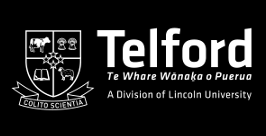When I first became interested in breeding thoroughbreds back in the late 1960’s, I read everything I could find on the subject. It quickly became apparent that there were two main schools of thought as to how one could produce superior animals. One established opinion recommended inbreeding to “desirable” ancestors; the opposing group to theorists thought that outcrossing as far as possible was the way to go. This latter group even went to the extent of using emotive terms such as “incestuous” to describe what they considered to be excessively close inbreeding.
As we all know, the way the breed has developed means that every thoroughbred is inbred to some extent but the question is, should we try to make this occur as distantly as possible or should we do the opposite? Or, as is so true in other areas of life, does the truth exist somewhere in the middle?
The first point to consider is that inbreeding clearly improves our chances of breeding a good horse. The catch is that it also improves our chances of breeding a bad one. If you reduce the gene pool, it all depends which combination of genes comes through as to whether your pride and joy gains black type or struggles to keep up in a maiden event at Hokitika. (I once owned an Oregon filly with the most beautifully balanced pedigree you could imagine; unfortunately she found West Coast competition far too hot). The more inbred your racehorse is, the more likely it is to be very good or very bad.
Advocates of inbreeding often use the adjective “judicious” to qualify either “inbreeding” or “linebreeding”. I would argue that we don’t really know whether it’s judicious or not until the horse in question is well into its racing career. To be fair, those who use the term often mean that a little inbreeding is no bad thing, but let’s not overdo it. However, the plain truth is that it’s impossible to ascertain whether or not an example of inbreeding in a particular horse’s pedigree has any influence at all in its level of performance. Any attempt to over-simplify a remarkably complex process is always doomed to fail.
Putting that argument to the side, there does seem to be a fair amount of evidence to suggest that duplicating some stallions or mares may coincide with a good level of racing performance in general. For example, there are many very useful racehorses which are inbred to Northern Dancer, Somethingroyal and Lalun.
However, the converse is equally true (also in general). A few decades ago I bred several horses with the great mare Eulogy duplicated in their pedigrees. The best of them was a maiden winner at Woodville. Similarly, inbreeding to Danehill appears to be fraught with danger at the moment.
All in all, inbreeding can be spectacularly successful but you’ve got to be (a) lucky and (b) careful. Beware complicated theories because theories are just that.

